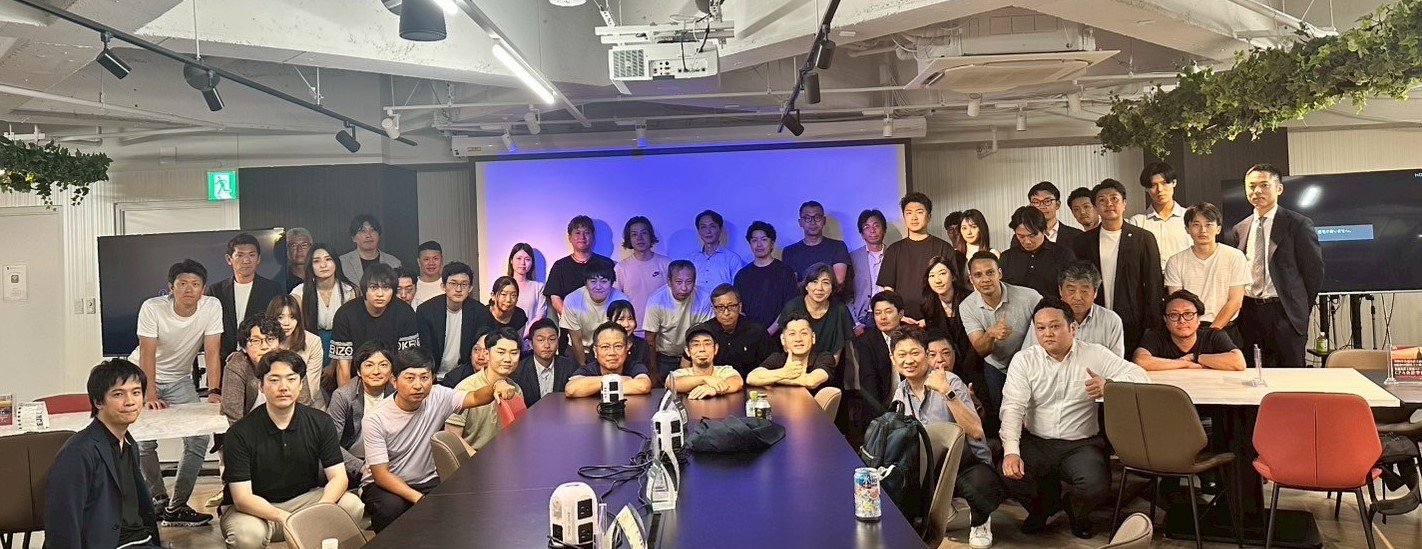AIを活用した経営戦略・組織戦略セミナー
ChatGPT、AIエージェント、生成AI…
AI技術が経営と組織の「意思決定」を大きく変えつつある今、“経営者・マネージャー層・起業家”にとって必要なのは「ツールの理解」ではなく“戦略にどう落とし込むか”の視点です。

AI(人工知能)がビジネスの在り方を根本から変えつつある今、日本企業も重要な分岐点に立たされています。多くの企業が、レポートの要約や議事録の作成といった個別業務でAIツールを「試す」段階にはありますが、全社的にAIを本格導入し、構造的な変革を進めている企業はまだ少数です。
ここに、CEOとしての問いが浮かびます。
「待つべきか、リードすべきか?」
はっきり申し上げます。AIの導入はもはや「選択肢」ではありません。効率化ツールではなく、未来に向けた企業基盤です。AIを企業運営の中心に据えられなければ、生産性だけでなく、市場での存在意義そのものが問われる時代がやってきます。
AIは「導入」ではなく「旅」
多くの企業が陥りがちな誤解として、「AIはすぐに使える便利ツール」として捉える傾向があります。たしかに、レポートの要約や会議の文字起こしなど、単体タスクにはすぐ効果が出ます。しかし、それはAIの可能性のほんの入り口に過ぎません。
真の変革は、AIを企業独自の業務フロー、データ構造、意思決定プロセスに深く統合したときに生まれます。企業ごとに「DNA」は異なり、それに合わせたAIの設計と構築が不可欠です。ツールの寄せ集めではなく、全体最適化されたAIエコシステムが必要なのです。
これは長期的な投資であり、「ビジョン」「コミットメント」「人材」「予算」「時間」すべてが問われます。
ROI(投資対効果)に必要なのは「忍耐」
AI導入において最も誤解されがちなのが「ROI(投資対効果)」です。経営者からはよく、「いつ成果が出るのか?」という質問がありますが、答えはこうです:
「すぐには出ない、しかし確実に、そして大きく出る」
ERPやクラウド移行、DX推進などと同様、AIも成果が出るまでには時間がかかります。しかしAIは、導入すればするほど、自社のデータを学習し、業務に適応し、企業活動に深く根付いていきます。そして、その価値は指数関数的に成長していきます。
たとえば、コンサルティング・ソフトウェア開発企業のイケバナソリューションズ社では、2年以上をかけてAI研究と内製開発を進めてきました。単なるツール導入ではなく、AIエコシステム構築に取り組んだ結果、今では業務効率とスケーラビリティの両面で大きな成果が出ています。
AIの成果は「四半期ベース」ではなく、「競争優位」「組織の柔軟性」「長期的なコスト効率」として現れます。だからこそ、CEOの「忍耐とビジョン」が求められるのです。
最大の壁は「人」――テクノロジーではない
AI導入において最も難しいのは技術ではありません。人間の意識と行動です。
特に日本企業では、長期雇用や和の文化、既存の業務慣習が根強く、変化への抵抗が起こりやすいものです。AIに対して不安や脅威を感じたり、「今まで通りが一番」と考える社員がいるのは当然です。
しかし、「自然と慣れるのを待つ」「抵抗する人が辞めるのを待つ」といった姿勢では、組織は前に進みません。経営陣が率先して以下のことに取り組む必要があります:
-
社員向けリスキリング(再教育)の投資
-
ソフトな移行を支えるステップの設計
-
「変化を楽しむ」文化づくり
-
学び続ける姿勢を評価する人事制度
そして何より大切なのは、AIは「人を置き換えるもの」ではなく、「人を高めるもの」であると伝えることです。単純作業をAIに任せ、社員には創造性・戦略性・対人力など、人間にしかできない仕事に集中してもらうことが目的です。
部分的な導入では変革は起きない
AIツールを点で使うだけでは、業務の一部が効率化されるだけで、企業全体の変革にはつながりません。本当に強い企業は、AIを業務全体に組み込み、価値の連鎖を生み出しています。
日本企業も、「ツール導入型」から「プロセス統合型」への移行が急務です。そこではAIが以下のような領域に貢献します:
-
全社的な意思決定支援
-
部門横断のリアルタイムデータ分析
-
顧客ニーズの予測とメンテナンスの最適化
-
組織ナレッジの自動蓄積と共有
AIエコシステムは、単に賢いだけでなく、速く、安定し、常に進化を続ける仕組みです。
短期利益より「未来への備え」を優先すべき時
AI導入は、利益のためだけでなく、事業の未来を守るための戦略的選択です。
技術の進化スピードは加速しており、適応できない企業は人材確保にも、顧客獲得にも苦労し、やがて競争に生き残れなくなっていくでしょう。AI導入は「イノベーション」ではなく、「事業継続戦略」の一部として捉えるべきです。
Cレベル(経営層)へのメッセージ
未来は「行動した者のもの」です。CEOこそが先頭に立ち、AI導入を「承認するだけ」ではなく、文化と組織構造の変革をリードする役割が求められます。
つまり:
-
長期的なAIビジョンを掲げること
-
余った予算ではなく、本気のリソース配分をすること
-
社員の意識改革を導くこと
-
結果よりも「変わる姿勢」を応援すること
数年後、「AIに投資すべきか?」という問いは、「なぜもっと早く始めなかったのか?」という後悔に変わるかもしれません。
As artificial intelligence (AI) continues to redefine the global business landscape, Japan’s corporate world is at a critical inflection point. While many organizations have begun dabbling with AI tools here and there, few have committed to the structural transformation required to truly leverage AI across the enterprise.
And herein lies the CEO's dilemma: Should we wait, or should we lead?
Let us be clear. Adopting AI is no longer optional. It is not merely a tool for efficiency; it is a foundational pillar for future readiness. Companies that fail to integrate AI as part of their core operational ecosystem risk falling behind — not just in productivity, but in relevance.
AI Is a Journey, Not a Plug-and-Play Tool
It is tempting to assume that AI can be introduced quickly—by using readily available tools for isolated tasks like report summarization, data entry, or meeting transcription. While these yield some benefits at the individual level, they barely scratch the surface of what AI can achieve at the organizational level.
Real transformation comes only when AI is integrated into the company’s unique operational workflows, data repositories, and decision-making structures. Every company has its own DNA—its knowledge base, internal logic, and legacy processes. This demands a customized, end-to-end AI platform aligned with internal systems, not a patchwork of tools that operate in silos.
This is a long-term investment. It requires vision, commitment, and resources—time, budget, and most importantly, people.
Return on Investment: Patience is Profit
One of the most misunderstood elements of AI implementation is ROI. Executives often ask, “When will we see the return?” The answer: not immediately—but certainly, and significantly—over time.
Just like any major infrastructure or process investment—ERP systems, cloud migration, or digital transformation—AI adoption comes with a ramp-up period. But unlike other technologies, AI’s value scales exponentially as it learns from company data, adapts to operations, and becomes embedded into daily workflows.
EKbana Solutions, a software development and counsulting firm that invested over two years in dedicated AI research and development, are now beginning to see significant operational gains and improved scalability. Their commitment to building an AI ecosystem—not just using tools—has paid off.
The message is clear: AI requires a CEO’s patience and vision. The ROI is not measured in quarters, but in competitive advantage, agility, and long-term cost efficiency.
The Human Factor: Resistance Is the Real Challenge
The hardest part of AI adoption isn’t the technology. It’s the people.
Some employees will resist. They may feel threatened, overwhelmed, or simply unwilling to change. This is natural, especially in Japan where harmony, tenure, and traditional workflows are deeply ingrained. However, waiting for these employees to “come around” or hoping they quietly resign is not a strategy—it is avoidance.
Leadership must:
- Invest in re-skilling programs
- Offer supportive transition pathways
- Build a culture that rewards adaptability and lifelong learning
It’s also crucial to communicate that AI is not about replacing people, but enhancing them. The goal is to reduce repetitive, low-value work so human talent can focus on strategic, creative, and interpersonal roles that AI cannot replicate.
Why Piecemeal Adoption Isn’t Enough
Using AI tools individually is like automating a few parts of a factory line while leaving the rest manual. It creates fragmentation, not transformation.
To compete with companies that are already embedding AI into their entire value chain, Japanese firms must move from tool-based adoption to process-based integration. Only then can AI contribute to:
- Company-wide decision-making
- Real-time data analysis across departments
- Predictive maintenance and customer insights
- Scalable knowledge management
An AI ecosystem is not just smarter—it’s faster, more consistent, and constantly evolving.
Future-Readiness Over Short-Term Profit
Finally, adopting AI isn’t just about profitability—it’s about future-proofing the business. The global pace of technological change is accelerating. Companies that fail to adapt will struggle to retain talent, attract customers, or even survive against more agile, AI-powered competitors.
AI integration should be seen not only as an innovation project, but as a core business continuity strategy.
A Call to Action for C-Level Leaders
The future belongs to those who act. CEOs must lead the charge—not just approve AI budgets, but drive the cultural and operational changes needed to become truly AI-ready.
This means:
- Embracing a long-term AI vision
- Allocating real resources (not leftovers)
- Leading organizational mindset change
- Supporting patients, not just results
In the coming years, the question won’t be “Should we invest in AI?” It will be “Why didn’t we start earlier?”